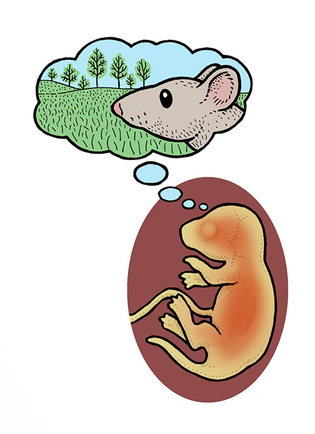
Gregory Nemec
We see because our eyes respond to light, transmitting signals that enable us to distinguish light from dark, black from blue. And yet, the real process of vision begins within the darkness of the womb: before we are born, before external cues trigger our brain cells, before our eyes are open. “It’s like dreaming about running forward through space,” says Michael Crair, a professor of neuroscience, ophthalmology, and visual science.
To investigate the earliest steps toward vision, Crair’s team monitored brain activity in fetal mice. They injected the rodents with a fluorescent green jellyfish protein, modified so that it glows when brain cells activate. Then they watched the luminous path run from retina to brain. The path of activity always ran in the same direction, coming from the same place—a sign that while the signals appeared spontaneously, they were not random. As Crair says: “Not turning left, not circling around, not moving backwards, but moved in a pattern that mimicked what the animal would see if it ran forward.” (The results are published in Science.)
But fetal mice don’t walk. Why did their brains send signals of movement? Crair believes those signals were similar to dreaming—bursts of activity based on experience. The fetuses had no experiences, so he suspects the path evolved from ancestors that had shorter gestations and learned to see as they swam ahead. That brain activity was retained, he believes, so that mammal neonates can detect motion as soon as they leave the womb.
 loading
loading